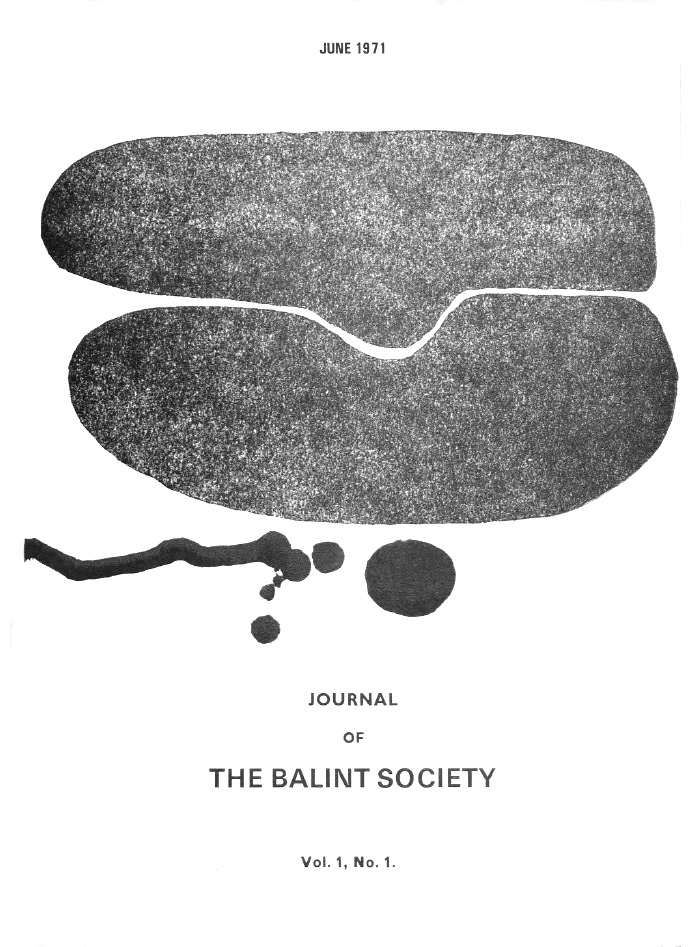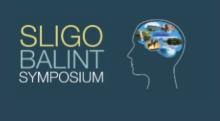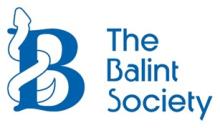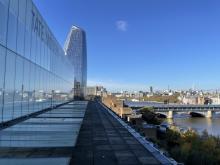ART AND PSYCHOLOGY
A Note on the Design for the Front Cover of the Journal
Dr. Stephen Pasmore.
The cover of this Journal was designed by my brother, Victor Pasmore, for The Balint Society, and it may be of interest to members to learn how he came to design it. At a meeting of the Council of the Society, when the first issue of the Journal was being discussed, the question of a suitable emblem for the cover was raised. I suggested that I should approach my brother for a design, as I thought his work was motivated in much the same way as our members' work was motivated when the 'flash technique' was being used. The Council agreed, and when I next met my brother, we had a long discussion on his approach to art and on our approach to the patient when using the 'flash technique'. My brother found so much common ground between our two approaches that he said he would be delighted to help the Society in any way he could, and would produce a design for the cover which he hoped would meet with Council's approval.

The design will puzzle those who choose to ask the question "What does it represent?" because it is impossible to appreciate or understand abstract art by attempting to judge it by the rules laid down for the appreciation of representative art. In representative art, judgement can readily be made by reference to the well-known rules of that art concerning proportion and harmony, light and shade, form and modelling, linear perspective, colour tones, technique of drawing and of handling paint, illusions of reality, and so on. In abstract art, judgement must be made by a different set of rules, and this judgement has become more difficult because the abstract artists have not been able either to enunciate clearly the principles that have motivated their work or to come to any agreement on a new set of rules.
There are two main forms of abstract art — the one where the artist, like Cezanne, gets his inspiration from outside by looking at nature and then abstracting from it, and the other where the artist gets his inspiration from within by composing with formal elements, like a composer of music who uses elements of sound, while the artist uses elements of colour or of simple forms like dots, circles, lines, triangles, rectangles, or squares.
The design on the cover is based on the latter form of abstract art, where the artist has composed his picture from a selection of simple forms. The essence of the cover design is the oval form created by the juxtaposition of two oblong interlocking masses, the one above the other. This form will evoke various emotions concerned with the close relationship between the two masses, such as calmness or disturbance, stability or instability, depth or superficiality. By itself, the oval form would have looked rather heavy, but the artist has added a linear development below with a worm-like structure on the left and a circular object on the right, both in pitch black, to lighten the oval form above and at the same time to give it more stability by contrasting it with the smaller, darker, and more dynamic forms below. The oval form and the linear development can now be seen as a new unit with a harmony of its own.
I do not know exactly how my brother built up this picture, but he would have started with a blank sheet of paper in front of him. He would have had no preconceived notion of what he was going to create. Then he could have made a small curved line which could have become the top left-hand corner of one of the two main masses. He would have then contemplated this curve and interacted with it, so that it would have led him to make a further mark on the paper. At this stage, he still would not have known what he was going to create, but the two marks he had made would have engendered a further emotion in him, so that he would have been inspired to take the shape further. And so the final design would have been created without any reference to representational art.
It will be seen that this technique is very similar to the 'flash technique', where the doctor, instead of drawing his picture of the patient by studying every element of his make-up, uses the abstract artist's technique and builds up his knowledge of the patient by starting with a blank mind with no preconceived ideas of what he intends to do. The doctor then, in the words of Michael Balint, 'identifies closely with the patient's feelings, withdraws and looks at what his involvement means, communicates his interaction with the patient in the patient's terms and then goes on repeating the process.'






